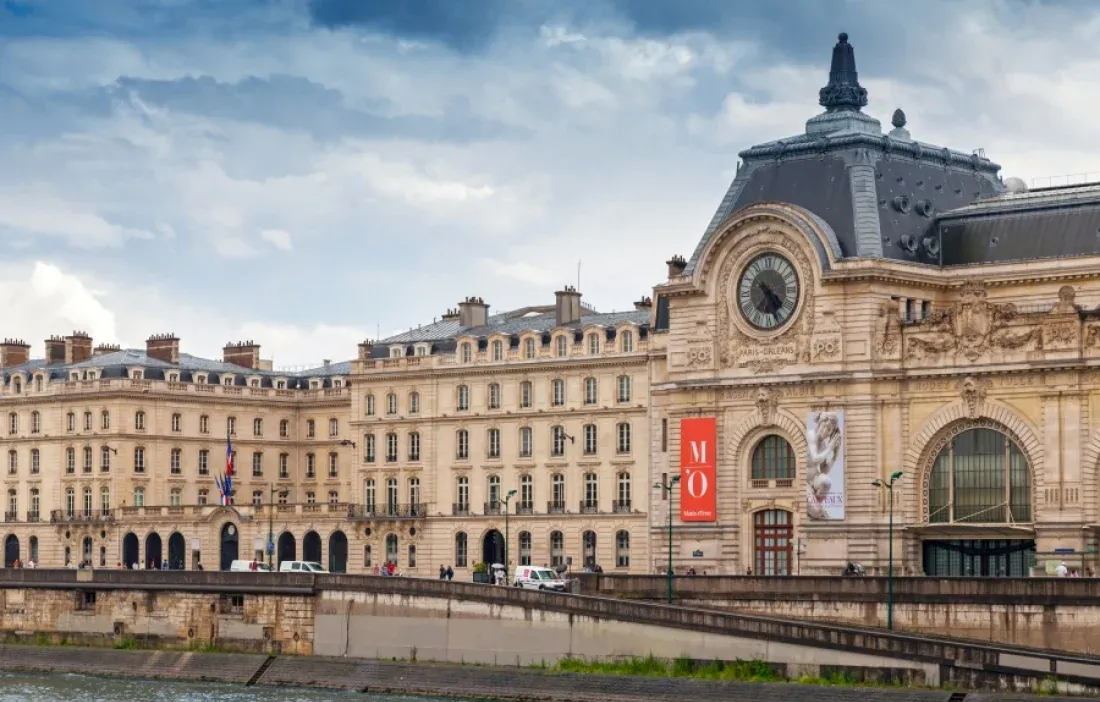Nestled on the banks of the Seine River in Paris, the Musée d’Orsay stands as a testament to the intersection of art and history. Housed within a stunning Beaux-Arts railway station, the museum boasts an unparalleled collection of Impressionist, Post-Impressionist, and Art Nouveau masterpieces. With its captivating blend of artistic innovation and historical significance, the Musée d’Orsay offers visitors a unique and enriching experience that transcends time.

The history of the Musée d’Orsay is as rich and dynamic as the artworks it houses. The museum’s origins can be traced back to the late 19th century when the Gare d’Orsay railway station was built for the Universal Exhibition of 1900. The Beaux-Arts architecture of the station itself is a work of art, characterized by its grandiose clock and expansive glass roof.
However, as the station’s utility waned over the years, discussions arose about its fate. Instead of demolishing this architectural gem, the decision was made to transform it into a museum. The Musée d’Orsay officially opened its doors in 1986, showcasing an extensive collection of artworks from the 19th and early 20th centuries.
The Musée d’Orsay’s collection is a breathtaking journey through the evolution of art during a pivotal period in history. The museum’s focus on the 19th and early 20th centuries allows visitors to witness the transformative shifts in artistic style, technique, and subject matter. From the luminous landscapes of the Impressionists to the bold experiments of the Post-Impressionists, the museum’s collection captures the essence of a rapidly changing world.
Among the highlights of the museum is the extensive collection of Impressionist masterpieces. Works by renowned artists such as Claude Monet, Édouard Manet, Edgar Degas, and Pierre-Auguste Renoir adorn the walls, inviting visitors to immerse themselves in the play of light, color, and brushstrokes. Van Gogh’s iconic “Starry Night Over the Rhône” and “Self-Portrait” offer a glimpse into the artist’s emotional turmoil and genius.
The Musée d’Orsay’s commitment to Art Nouveau is evident in its collection of decorative arts, furniture, and sculptures. This style, characterized by its sinuous lines and organic motifs, is beautifully exemplified in Hector Guimard’s entrances to the Paris Métro, which are on display within the museum.

The Musée d’Orsay offers various ticketing options to cater to the diverse needs of its visitors. Standard admission tickets are priced at €14 for adults, granting access to the museum’s permanent collection and temporary exhibitions. Reduced prices are available for visitors under the age of 26, European Union residents aged 18-25, and individuals with disabilities.
For those seeking an enhanced experience, guided tours and workshops are available at an additional cost. These guided experiences provide deeper insights into the artworks and the historical context surrounding them.
As with most popular museums, purchasing tickets online in advance is highly recommended. This not only allows for a smoother entry process but also guarantees a time slot, particularly during peak visiting times.
The Musée d’Orsay’s strategic location on the Left Bank of the Seine River offers visitors a stunning view of Paris’s iconic skyline. The museum’s address is as follows:
Musée d’Orsay
1 Rue de la Légion d’Honneur
75007 Paris, France
Situated within walking distance of other renowned Parisian landmarks such as the Louvre Museum and the Eiffel Tower, the Musée d’Orsay is an integral part of the city’s cultural landscape.
The museum is well-connected to Paris’s public transportation system, making it easily accessible to both locals and tourists alike. Visitors can reach the museum by taking the Métro (Line 12) or various bus lines.
